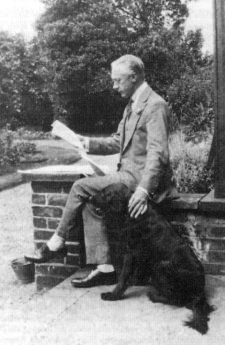
“ STOP DOING the wrong thing and the right thing will DO ITSELF ”
FM Alexander (1869-1955)
Frederick Matthias Alexander was born in Tasmania in 1869. He suffered from vocal problems and lost his voice while working as an actor in Australia.
When specialists failed to help him, he decided to find out the cause of losing his voice. With the aid of mirrors he meticulously studied the way in which he spoke and moved and realised that he carried in himself countless tensions that appeared when he spoke, and even when he thought of speaking.
Through years of intensive study he developed his unique technique to achieve improvements. Having cured his vocal problems without medical aid, he then started helping his actor friends with breathing problems and was soon being recommended by doctors to help with a variety of ailments.
In 1904 after being urged by his medical friends, he arrived in London, then the centre of the medical world, where he disseminated the Alexander Technique to a larger audience.
Having realized that incorrect 'use of the self' might be the cause of much suffering, he wrote four books about his Technique to explain it in depth and he established the first Alexander Technique teacher training school in London.
He worked with a variety of pupils such as top actors in London, patients with chronic pain, balance and posture problems, asthma and other breathing difficulties, curing stuttering, reducing stress, tension and back, neck and shoulder pain. Some of the most influential people of his time, such as George Irving, Aldous Huxley, George Bernard Shaw and John Dewey became his pupils.
Alexander died in 1955 but his principles live on through the work of many teachers of his method and the Alexander Technique continues to expand worldwide.
In 2008 the British Medical Journal published the findings of a clinical study into the effects of Alexander Technique on patients with non specific lower back pain. It was shown that a course of 24 Alexander Technique lessons reduced monthly days in pain from 21 to 3 and the average number of activities limited by low back pain had fallen by 42%, even one year after completing the course.


